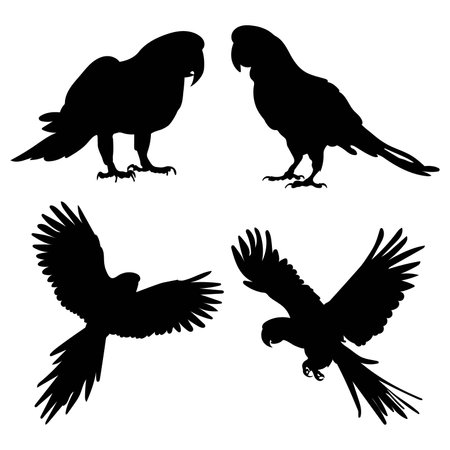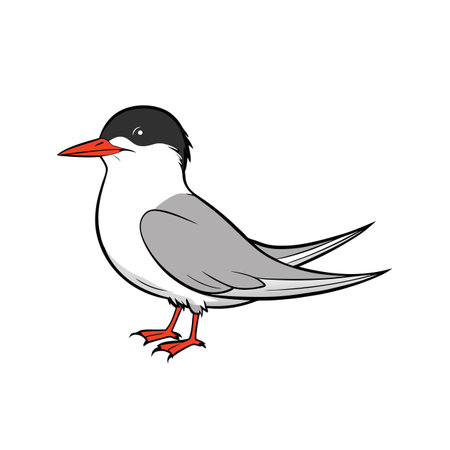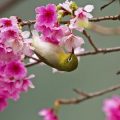Introduction to Bird Feeding in British Gardens
Bird feeding has become an integral part of garden culture across the United Kingdom, reflecting both a deep appreciation for local wildlife and a commitment to conservation. In towns and villages alike, gardens serve as vital habitats for numerous native bird species, particularly as natural food sources dwindle due to urban development and changing landscapes. The popularity of bird feeding is evident in the wide variety of feeders adorning patios, balconies, and allotments throughout Britain. For many Britons, providing for garden birds is not merely a pastime; it is a cherished tradition that fosters a connection with nature, encourages biodiversity, and supports declining bird populations. As more people embrace sustainable gardening practices, understanding which types of bird feeders work best in British conditions is essential for attracting a diverse array of feathered visitors while supporting their wellbeing.
Hanging Feeders: Classic Choice for British Songbirds
When it comes to feeding garden birds in the UK, hanging feeders are a quintessential choice that blends practicality with tradition. These feeders are particularly effective for attracting the diverse array of songbirds that frequent British gardens. Below, we analyse the strengths of hanging feeders, highlight which species benefit most, and provide guidance on optimal placement for maximum avian activity.
Analysis of Hanging Feeders
Hanging feeders are typically suspended from tree branches, hooks, or specially designed poles. They are constructed from materials such as metal, plastic, or wood and often come with protective features to deter squirrels and larger birds. Their elevated position keeps food dry and clean while reducing access for ground-dwelling pests.
Benefits of Hanging Feeders
- Versatile placement options in gardens of all sizes
- Minimises mess and spoilage compared to ground feeders
- Helps protect smaller birds from predators
- Easy to refill and maintain year-round
Suitable Species & Typical British Birds Attracted
The design of hanging feeders is especially suited to agile, perching birds. In British gardens, these feeders attract a variety of popular native species. The table below outlines common bird visitors alongside their preferred feeder contents:
| Bird Species | Typical Food Types |
|---|---|
| Blue Tit | Sunflower hearts, peanuts, suet pellets |
| Great Tit | Mixed seeds, fat balls, mealworms |
| Coal Tit | Niger seed, sunflower seeds |
| Goldfinch | Niger seed, sunflower hearts |
| Siskin | Niger seed, mixed seed blends |
| Sparrow (House and Tree) | Mixed seeds, suet cakes |
| Chaffinch (occasionally) | Mixed seeds, sunflower hearts |
Best Placement in UK Gardens
Proper positioning is vital for the effectiveness of hanging feeders. Here are key considerations for British gardens:
- Avoid Windy Spots: Choose sheltered areas to prevent excessive swaying and spillage.
- Partial Shade: Place feeders away from direct sunlight to keep feed fresh and cool.
- Visibility: Ensure feeders are visible from windows for easy birdwatching but close enough to cover (e.g., hedges or shrubs) so birds feel safe from predators.
- Height: Suspend at least 1.5 metres above ground to deter cats and foxes.
- Away from Busy Paths: Reduce disturbance by keeping feeders away from high-traffic areas.
Summary: Why Hanging Feeders Work So Well in Britain
The enduring popularity of hanging bird feeders across the UK can be attributed to their adaptability and effectiveness in attracting beloved garden songbirds. By catering specifically to small perching species and allowing flexible placement throughout the garden landscape, these feeders help ensure a thriving community of wild birds year-round.

3. Table Feeders: Traditional Appeal and Versatility
Table feeders hold a special place in the heart of British garden culture, seamlessly blending classic aesthetics with practical function. These feeders, often crafted from wood or metal, evoke a sense of timelessness that complements both formal and informal garden layouts found throughout the UK. Their open and accessible design appeals to a wide range of bird species, from robins and blackbirds to sparrows and even larger birds such as wood pigeons. Unlike hanging feeders, table feeders sit at an accessible height, making them ideal for gardens with mature trees, structured hedges, or traditional borders.
Classic Charm for British Gardens
The visual appeal of table feeders lies in their ability to enhance the quintessential British garden atmosphere. Whether nestled amongst cottage garden perennials or positioned on a manicured lawn, these feeders create a welcoming focal point for wildlife. Their presence encourages natural bird behaviours and provides ample opportunities for observation—an activity cherished by many British gardeners.
Accessibility for Diverse Bird Species
One of the key advantages of table feeders is their inclusivity. The broad, flat surface allows ground-feeding birds—which may struggle with perches or tubes—to feed comfortably. This means you can attract not only tits and finches but also dunnocks, wrens, and thrushes, contributing to greater biodiversity in your outdoor space.
Maintenance Tips for Longevity
To ensure table feeders remain safe and attractive, regular maintenance is essential. Clean the feeder surface frequently to prevent the spread of diseases common among garden birds. Use warm water and mild disinfectant weekly, especially during damp British weather when mould can develop quickly. Position your table feeder away from dense shrubbery to deter predators and replace any spoiled food promptly to keep visiting birds healthy.
4. Window Feeders: Up-Close Encounters in Urban Spaces
Window feeders offer a unique solution for bird enthusiasts living in British urban environments or those with limited garden space. Their design allows direct attachment to glass surfaces, providing an unparalleled close-up view of visiting birds and making them especially suitable for flats, terraced houses, or small city gardens where traditional hanging feeders may not be practical.
Effectiveness of Window Feeders in Urban British Settings
Urban settings often present challenges such as limited green space, higher human activity, and increased predation risks. Window feeders excel in these conditions by:
- Maximising Space: Ideal for balconies or windowsills, they require no additional ground or hanging space.
- Minimising Mess: Spillage is contained on the window ledge, making maintenance straightforward.
- Encouraging Urban Wildlife: They offer essential food sources in areas with fewer natural resources, attracting local species like blue tits, robins, and house sparrows.
Guidance for Attracting Birds to Window Feeders
Success with window feeders depends on both feeder placement and food choice. Consider the following best practices:
| Strategy | Description |
|---|---|
| Feeder Placement | Install at least 1.5 metres above ground to deter cats and keep away from busy walkways to reduce disturbance. |
| Food Selection | Opt for versatile mixes: sunflower hearts, suet pellets, and mealworms are favourites among British garden birds. |
| Cleanliness | Clean the feeder weekly to prevent disease transmission and ensure clear viewing windows. |
| Persistence | Birds may take time to discover new feeders—be patient and consistent with food replenishment. |
Considerations for High-Density Areas
In densely populated British neighbourhoods, window feeders serve as an important link between urban residents and nature. They foster biodiversity even amid concrete landscapes, supporting declining bird populations while offering educational opportunities for children and adults alike. For added success, avoid placing feeders near reflective glass or noisy areas to reduce bird collisions and anxiety.
Summary
Window feeders are a practical and rewarding choice for British homes lacking traditional garden space. By following thoughtful placement strategies and maintaining cleanliness, city dwellers can enjoy regular visits from Britain’s beloved birds—right on their windowsill.
5. Ground Feeders: Attracting Robins and Ground-Feeding Birds
Ground feeders are a quintessential choice for British gardens, especially for those who wish to attract beloved native species such as robins, dunnocks, blackbirds, and wrens. Unlike hanging or table feeders, ground feeders cater to birds that naturally forage at or near soil level, mirroring their instinctive feeding behaviour.
Why Choose Ground Feeders?
Many iconic British birds prefer feeding on the ground, making these feeders particularly effective. Robins, with their friendly presence and territorial songs, are perhaps the most cherished of all UK garden visitors. They, along with dunnocks and song thrushes, are more likely to frequent gardens where food is available at ground level. A ground feeder allows for a wider range of food types—including mealworms, suet pellets, seeds, and soft fruit—that can be scattered or placed in shallow trays.
Strategic Placement in Your Garden
The success of a ground feeder largely depends on its positioning. Place your feeder in a quiet spot with good visibility so birds can easily spot approaching predators. Ideally, choose an open area close to low shrubs or hedges, providing birds with quick cover if they sense danger. Avoid placing feeders directly under dense bushes where cats may lurk undetected.
Protecting Against Pests and Unwanted Visitors
A common challenge with ground feeders is deterring pests such as rats and squirrels. To reduce this risk, opt for mesh-bottomed trays that allow rainwater drainage and prevent seed build-up. Some specialised ground feeder cages are designed to admit small birds while excluding larger animals and pets. Regularly clear away leftover food and reposition the feeder periodically to avoid attracting vermin.
In summary, ground feeders play a vital role in supporting the diverse avian life of British gardens by catering to species that might otherwise be overlooked by traditional hanging designs. With thoughtful placement and appropriate protection measures, you can enjoy regular visits from some of the UKs most charming garden birds throughout the year.
6. Choosing the Right Feeder: Seasonal and Regional Considerations
Selecting the most effective bird feeder for your British garden requires more than simply picking an attractive design. It involves careful consideration of the changing seasons, the diversity of regional bird species, and the often unpredictable UK weather. By tailoring your choice to these factors, you can ensure your feeders are both functional and appealing to local wildlife throughout the year.
Understanding Seasonal Changes
British gardens experience distinct seasonal shifts that directly impact bird feeding habits. During winter, when natural food sources are scarce, robust feeders like seed hoppers and suet cages become essential. These provide high-energy sustenance necessary for survival in cold conditions. Spring and summer, on the other hand, invite a wider variety of birds as breeding pairs seek protein-rich foods; mealworm trays or peanut feeders work particularly well during these months.
Adaptability to British Weather
Weather resilience is crucial when selecting a feeder. Rain and wind are common across much of the UK, so opt for feeders with weatherproof features such as domed covers or drainage holes to prevent spoilage. Sturdy materials like metal or UV-resistant plastics withstand harsh conditions better than wood or low-grade plastics. Ensuring easy cleaning is also important, as damp conditions can encourage mould and disease.
Considering Regional Bird Populations
The types of birds frequenting your garden will vary by region. For instance, goldfinches thrive in southern England and favour nyjer seed feeders, while coal tits and siskins, more common in Scotland and northern areas, appreciate sunflower hearts or mixed-seed feeders. Research which species are prevalent locally and select feeders designed to accommodate their feeding preferences—tube feeders for finches, ground trays for robins, or caged designs for smaller songbirds needing protection from larger competitors.
Practical Tips for British Gardens
Place feeders in sheltered spots to reduce exposure to strong winds and heavy rain, but keep them visible enough to attract birds. Rotate different types of feeders seasonally to match changing dietary needs and migration patterns. Lastly, remember that local cats and squirrels may also be attracted to your offerings; squirrel-proof models or elevated placements help safeguard both birds and food supplies.
7. Summary: Creating a Bird-Friendly British Garden
Choosing the right bird feeders for your garden is essential for supporting local wildlife and enjoying the rich diversity of birds found across the UK. As highlighted in this guide, the best feeders—ranging from seed feeders and suet cages to ground trays—cater to different species and feeding habits, ensuring your garden becomes a haven for both common and less frequently spotted birds. To maximise biodiversity, combine various feeder types and regularly offer a variety of food such as seeds, nuts, fat balls, and mealworms. Position feeders in safe, sheltered spots away from predators and keep them clean to prevent the spread of disease. Additionally, consider incorporating native shrubs, hedges, and water sources to create a holistic habitat that encourages nesting and year-round visits. By thoughtfully planning your bird feeding strategy, you not only contribute to local conservation efforts but also enhance your own enjoyment through vibrant birdwatching experiences right outside your window.


